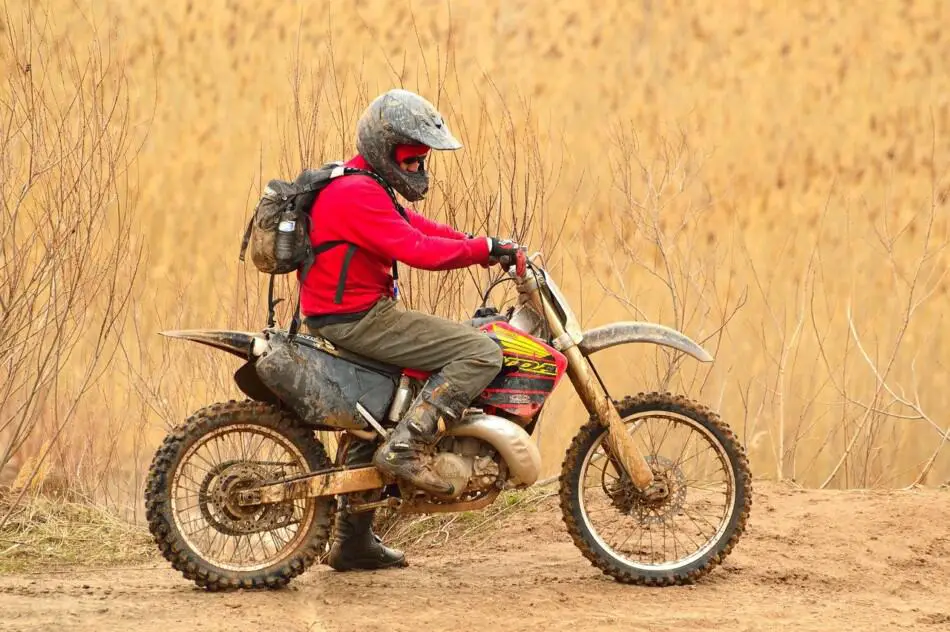Riding a motorcycle is perhaps one of the most reliable and legal ways to experience a sense of freedom and exhilaration.
You experience your surroundings differently than driving a car because riding a motorcycle triggers so many of your senses and requires your undivided attention – in a good way.
If you want to (need to) learn to ride, it is possible to teach yourself.
While it is possible to learn to ride a motorcycle on your own, it is strongly suggested you seek the help of an experienced mentor or attend riding lessons – for your safety and others. Safely riding a motorcycle requires a “sixth sense” gained through experience, which a beginner lacks.
Before teaching yourself to ride a motorcycle, you must prepare a few things to get you road-legal and protected as much as possible.
If you want to spare yourself unnecessary fines, check the validity and restrictions on your learner’s permit.
Then do yourself a favor – get the proper protective gear before you climb on your bike and start your adventure in learning this skill.
What Do I Need When Learning To Ride A Motorcycle?
Apart from the obvious requirement of having a motorcycle to practice, there are other essential things to acquire before you hop on it.
Safety gear cannot be stressed enough. If you want to ride a motorcycle, it will help if you keep yourself from getting a severe injury because “I’m just taking it around the block. I don’t need a helmet” might be your last ride.
Before hopping on a motorcycle and heading for the nearest public road to learn to ride it, you will need the following to ensure your safety and the safety of others:
- A valid motorcycle learner’s permit
- A helmet
- Gloves
- Motorcycle boots
- A motorcycle jacket
- A suitably-sized motorcycle for learning
- Optional but recommended: An experienced mentor
-> Read Also What Is An Autodidact?
1. Safety First: Gear Up Before Riding A Motorcycle
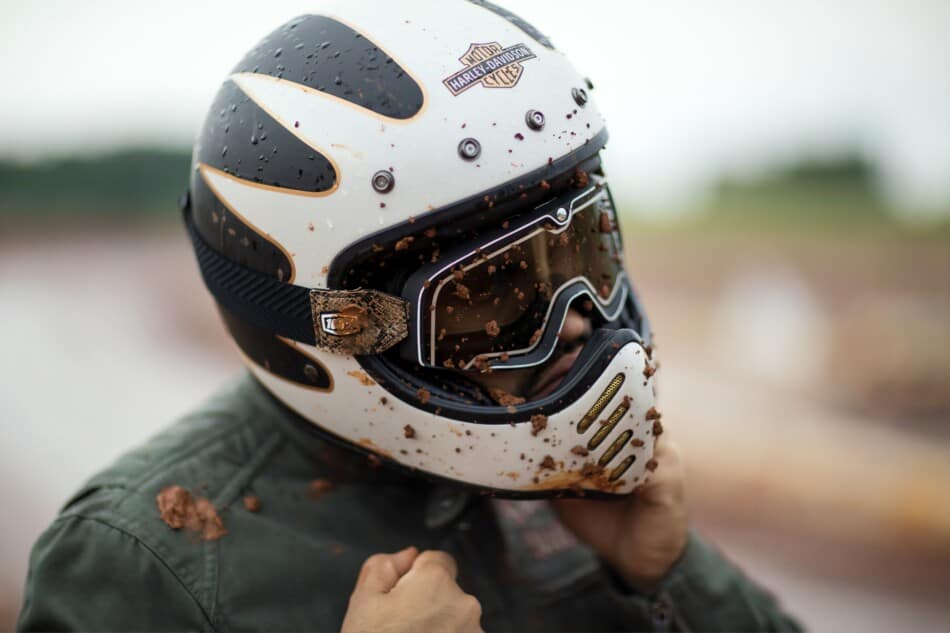
When riding a motorcycle, you are not in an enclosed capsule with safety belts and airbags that deploy in the unfortunate event of an accident.
To protect your body in the case of an accident, you need to wear protective gear to protect your body’s most exposed or vulnerable extremities.
Your Helmet Should Fit You Snugly
Helmets are designed to insulate your head from injury – think accidents, debris, rocks thrown up from other vehicles, or colliding with a bird at speed (it happens more often than you might think).
Helmets can help cover your ears and protect your face and eyes. Even butterflies can hurt you at 60 mph, by the way.
The helmet you choose will depend on what type of riding you plan on doing. Some helmets come with peaks, and some do not. Some helmets are open-faced, and others have special visors that don’t mist up in cold conditions.
Your helmet should fit your head snugly and be suited to the shape of your head. Remember that a helmet is useless in protecting you if it is not fastened correctly.
Suitable Gloves To Protect Your Hands
Christmas mittens won’t cut it here. It will help if you have gloves with grips on the palms and the fingers to hold the handlebars without slipping.
Gloves can be made from leather or synthetic material, but it is advised you have gloves with added knuckle protection.
Your gloves should keep your hands warm enough to use the front brake and adequately engage the clutch.
Motorcycle Boots To Protect Your Shins, Ankles, And Feet
Many people underplay the importance of protective motorcycle boots. They can be cumbersome to walk in, but rather that than a fractured ankle or broken toes.
Metal-capped motorcycle boots with reinforced ankles protect your ankles, feet, and toes. Some motorcycle boots even have an extra layer on the upper part of the left boot for changing gears.
Getting boots that extend as high as possible up your shins is advisable as they offer more protection to your legs.
Sometimes stones, branches, or debris can hit you on your shins, and they can cause a lot of damage.
A Padded Motorcycle Jacket
The jacket you wear when riding a motorcycle should consist of padding on your shoulders and elbows at the very least.
Better motorcycle jackets have padding on the front and back to protect your torso – think about your ribs and organs.
Your motorcycle jacket should fit snugly around your torso (otherwise, it will balloon when riding) and allow enough movement for your arms.

2. Choose An Appropriate Beginner Motorcycle
If possible, buy or borrow a motorcycle that is suitable for learning. Consider that it will most likely fall or be dropped (we like to call it side stand failure), so choose a forgiving motorcycle that can get a few scratches and dings because those are bound to happen.
Below are some considerations to help you pick a good beginner motorcycle:
- Mid-to-low engine capacity. A 250cc is a good size engine for learners.
- Light-weight. A heavy motorcycle can be challenging to maneuver and cause fatigue.
- Easy to mount and dismount while wearing riding gear.
- Suitable seat height so you can have one or both feet on the ground when stationary.
3. Acquaint Yourself With The Controls Of Your Motorcycle
The parts used to control your motorcycle are similar to a car’s controls, but their locations differ due to the riding position.
Typically, the controls on the bike’s left are for changing gears, while the controls on the right are for speed control and braking.
Hand Clutch
A motorcycle’s clutch is usually situated on the left handlebar, a lever you have to pull toward you to disengage the engine’s power from the rear wheel while changing gears.
To hold onto the handlebar simultaneously, you must use two fingers to depress the clutch while holding the handlebar.
Gear Shifter Pedal
The gear shifter pedal can be located in front of your left foot peg. You use your left foot to change one gear at a time when the clutch is depressed.
Throttle Handle
The throttle is situated on the right handlebar. To accelerate, you need to twist the grip towards you, making your wrist go down.
To decelerate, you should release your grip, and it should automatically return to the zero throttle position. If the handle grip sticks, it needs to be fixed as it will affect your ability to brake effectively.
Front And Rear Brakes
The brake lever for the front wheel is located on the right handlebar, while the back brake pedal is situated in front of your right foot peg.
The faster you are traveling, the harder your braking will need to be. Hard braking requires some different skills as the bike might skid or fishtail, so don’t go faster than you can handle.
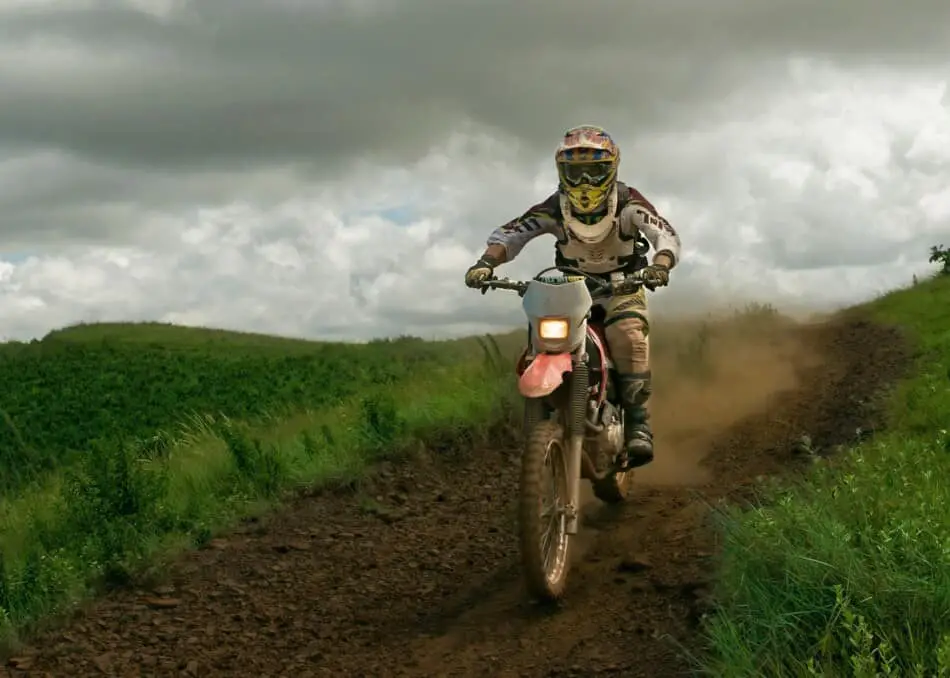
4. Learn To Brake Safely With Front And Rear Brakes
It is wise to practice braking and test the sharpness and efficiency of your brakes. Braking too hard on your motorcycle’s back brake will cause the back tire to lock and skid unless you have ABS.
Hard braking on the front brake could send you flying over the handlebars as your body maintains inertia. Incidentally, going over the handlebars is called a high side.
5. Learn How To Change Gears On Your Motorcycle
Most motorcycles have five gears and Neutral. The sequence of gears starts with the first gear at the bottom, Neutral, then the second, third, fourth, and fifth gear (and maybe more) as you go upward.
To gear down, you tap down a click. To gear up, you need to hook your left boot under, close to your big toe, and click up a gear at a time.
6. Practice Pulling Off And Changing Gears
Before starting your motorcycle, you should be geared up and on it, with one or both feet on the ground to balance it when your side stand is kicked up.
Many motorcycles will not allow you to engage in first gear unless the side stand is up.
This safety feature prevents the side stand from dragging while at speed, as it could hook onto the ground and change your direction undesirably.
Once your motorcycle is turned on, and its side stand is up, it is up to you to balance the bike in an upright position while it is stationary.
You will need to use your clutch lever and gear shifter to engage in first gear (from Neutral start) and then practice the interplay between clutch control and the throttle for a gentle pull-off. Hold off on the wheelies for a while.
Once you have mastered pulling off in first gear and have some momentum, you can practice gearing up or down, a click at a time.
Changing gears with your feet takes practice, especially when you are wearing chunkier boots and the shifter pedal is relatively small, but you will get used to it.
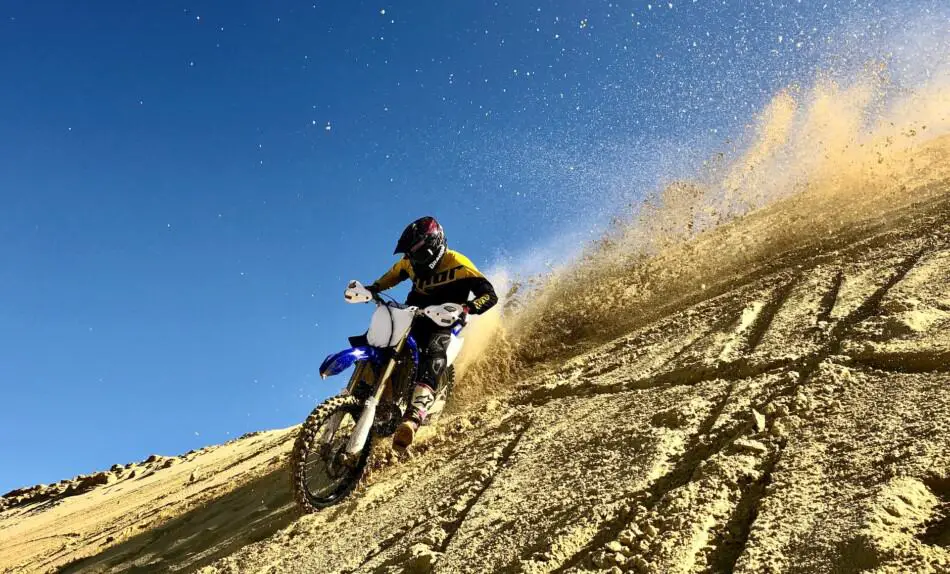
7. Learn The Different Ways Of Steering Your Motorcycle
Steering your motorcycle is not the same as driving a car. Aside from the apparent lack of a steering wheel on a bike, it only has two wheels.
The front wheel of a motorcycle is directed by turning your handlebars from side to side while the back wheel propels the bike forward.
When going at very slow speeds, you will use the handlebars to steer the front wheel in the direction you want. Turning at higher speeds requires a slight turn of the handlebars and shifting your weight to the side you wish to ride.
The physics behind this kind of steering, as well as steering by counter-steering (helpful for swerving), is explained in this video.
8. Learn How To Park Your Motorcycle And How To Walk With It
Learning to park your motorcycle well can save you a lot of hard work. Firstly, pick a space that is as level as possible, so your bike is less likely to fall over.
If you have to pull over and park on the side of the road, check the camber of the road, as your side stand might not be able to support your motorcycle sufficiently, causing it to fall.
Try to choose a parking space for your motorcycle with a firm place for your side stand.
If you are parking on a hill, it is better to park the bike facing uphill, with the back of your front tire pushed up against something solid, like a curb or rock, while pointing towards the road. It is helpful to park your motorcycle facing where you will pull off.
Walking with your motorcycle is also important, as you may have to move it a short distance. For example, you may want to move it to a better parking spot that has become available.
As you can imagine, walking with a heavy machine at your side can be cumbersome, so it is best to learn how to do it properly to avoid toppling over with your motorcycle.
Walking with your bike requires keeping it upright, with your left hand on the clutch and your right hand ready at the brake.
You will also need to be able to put down your side stand when necessary, so make sure you are pushing your motorcycle on the correct side
9. Learn How To Pick Up Your Motorcycle If It Has Fallen
There is a saying amongst motorcycle riders that alludes to the fact, “It is not if you fall, it is when you fall.” Dropping a motorcycle comes with the territory and is likely to happen more often as a beginner.
It is helpful to choose a light, older motorcycle for learning because you have to learn to pick it up.
To minimize the strain on your back and to protect you and the motorcycle, there are various ways to pick up your fallen machine safely. You can view one such method in this video.
10. Find A Safe Place To Practice Riding And Braking
Finding a safe space to practice the skills you are learning is a good idea. Practicing riding on busy streets or highways is dangerous for you and others.
Before you go out to practice, familiarize yourself with the limitations on your learner’s permit (e.g., it might say no night-time riding), and preferably tell someone where you will be practicing if they can’t come along.
Good places to practice riding your motorcycle include empty parking lots, quiet neighborhoods and roads, and few pedestrians.
Longer streets can give you more opportunities to accelerate and change gears. It is wise to take along something to drink as learning to ride a motorcycle can make you quite thirsty.
11. Learn How To Ride Defensively Instead Of Aggressively
Defensive riding assumes that everyone on or around the road is a potential threat to you. Motorcycle accidents often occur due to other drivers and pedestrians not looking properly before pulling into or walking onto a road in front of the rider.
By learning to ride defensively, you practice using foresight which might spare you your life or nasty injuries.
Aggressive motorcycle riding implies that the rider is being a jerk. Riding dangerously, taking corners too fast, or road hogging are some behaviors that could fall into this category.
However, safely overtaking a vehicle to get out of a blind spot or revving your engine to announce you are behind someone who hasn’t seen you might also be perceived as aggressive but is not necessarily so.
12. Watch Training Videos And Read Resources
You can find numerous tutorials on YouTube that will guide you through learning to ride a motorcycle yourself. The following two links are examples of such videos:
- How to Start Riding a Motorcycle By Yourself
- NEW Motorcycle Rider? Learn How To Start Riding A Motorcycle!
The Motorcycle Safety Foundation (MSF) offers a Beginner Riders Course which has helped more than 8 million people across the U.S. since 1974. Amongst their different course options is an e-Course that costs $19.99 and will help prepare you for riding your motorcycle and getting your license.
ICBC Learn To Ride Smart is also a great resource (PDF) and is free. It can also help you with your learning and license preparation.
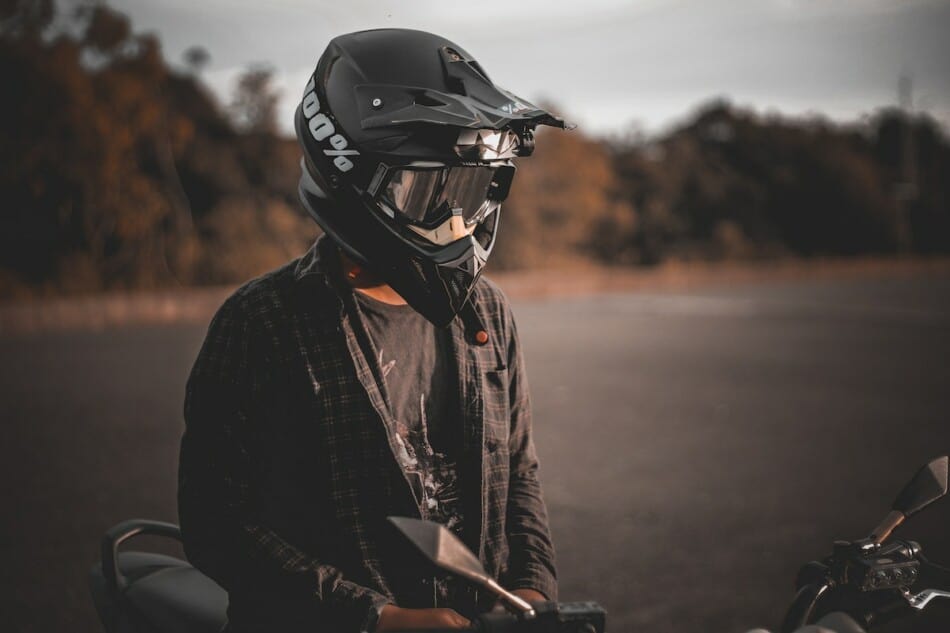
13. Take Advanced Riding Courses
Even though you are learning to ride a motorcycle on your ace, it is highly recommended that you go for some advanced riding training or have a mentor.
In these courses, you will learn skills like emergency braking and swerving, plus you get to glean from the experience of seasoned riders. MSF offers practical rider courses all over the U.S.
If you plan to take your newly acquired riding skills to different terrains, it is certainly advisable for you to get relevant training and advice.
For example, riding on soft sand requires a different weight distribution on your motorcycle. Touring on a cruiser differs from adventuring through the forest or desert on an adventure or dirt bike.
-> Learn More about Self-Learning vs. Classroom Learning: Which Is Better?
14. Know How To Look After Your Motorcycle
To get the most out of your motorcycle, it is wise to learn how to do the essential maintenance.
Basic maintenance includes regularly checking the tire pressure, oil, and filters and servicing your motorcycle at the recommended service intervals with a reputable mechanic.
Keep your bike clean, look for leaks and rust, and check for wear and tear on cables and pipes.
When starting your motorcycle, it is a good idea to let it idle before riding to ensure the engine has warmed up and the fluids are circulating correctly.
If you are planning long-distance trips, you may need to learn how to change a tire, which means carrying a few tools and spares with you in a pannier bag or custom-made luggage roll.
-> Learn more about the 7 best websites for self-learning
Conclusion
You can teach yourself to ride a motorcycle without being a prodigy. People of all ages ride them, so there is no reason for you not to try.
When learning to ride a bike, it is best to ensure you have the correct safety gear and a lightweight beginner motorcycle. It would help to teach yourself the controls before setting the motorcycle in motion.
Learning to change gears, accelerate, decelerate, brake, and steer, are all part of controlling a motorcycle and should be practiced in a safe and quiet place.
A mentor or attending riding classes will assist you in learning as much as possible about riding and caring for your motorcycle and looking after your safety.
Gear up, let’s go!
References
- https://driving.ca/features/feature-story/so-you-wanna-learn-to-ride-a-motorcycle
- https://motorbikewriter.com/5-know-learning-ride-motorcycle/
- https://msf-usa.org/basic-ecourse/
- https://msf-usa.org/brc/
- https://www.icbc.com/driver-licensing/Documents/ltrs_full-guide.pdf
- https://www.icbc.com/driver-licensing/driving-guides/Pages/Learn-to-Ride-Smart.aspx
- https://www.liveabout.com/how-to-ride-a-motorcycle-2399588
- https://www.popularmechanics.com/cars/how-to/a5066/how-to-ride-a-motorcycle/
- https://www.quora.com/How-do-you-teach-yourself-to-ride-a-motorcycle
- https://www.wikihow.com/Ride-a-Motorcycle-(Beginners)
- https://www.youtube.com/watch?v=E01S3aDYNkQ
- https://www.youtube.com/watch?v=w7A9vNJJB70
- https://www.youtube.com/watch?v=ZpV2Bg-WX0w

